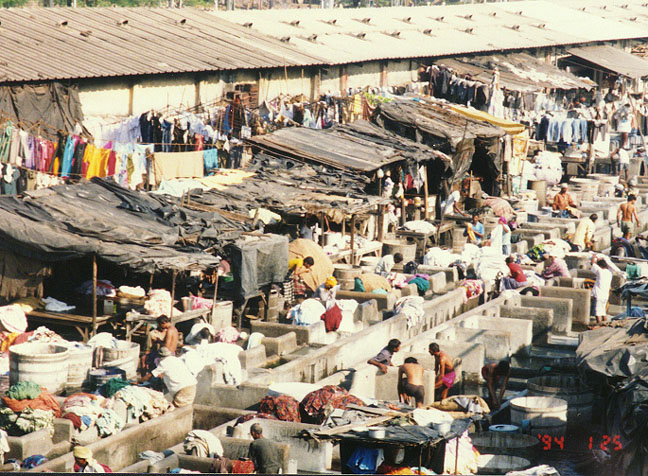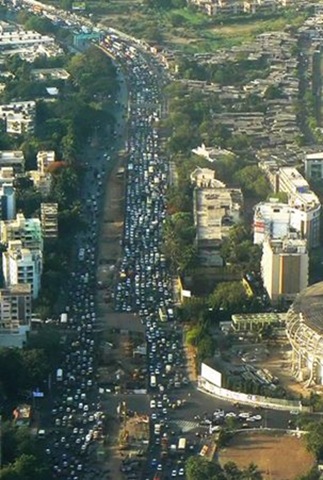Living life on the edge, scrambling for a toehold on trains, snaking one's way through traffic snarls, fighting to find a roof over one's head all combine to make Mumbai the city that never sleeps — and Mumbaikars the people who die younger than the rest of the country.
A study has found that the average Mumbaikar is likely to die at least seven years before other Indians and about 12 years before people living in the rest of Maharashtra.
Despite economic growth and availability of good health facilities in the city, which normally lead to an increase in life expectancy in societies across the world, Mumbaikars on an average live to the age of 56.8 years. Life expectancy is 52.6 years for men and 58.1 years for women. The average all-India life expectancy figure is currently 63.7 years for both males and females. This means the average Indian's lifespan is at least seven years more than that of the average Mumbaikar.
These figures came up in the recently published Human Development Report 2009 prepared by the National Resource Centre for Urban Poverty and the All India Institute of Local Self Government, Mumbai. The report was made with support from the United Nations Development Program, the ministry of housing and urban poverty alleviation, Government of India and the Municipal Corporation of Greater Mumbai.
Despite economic growth and availability of good health facilities in the city, which normally lead to an increase in life expectancy in societies across the world, Mumbaikars on an average live to the age of 56.8 years. Life expectancy is 52.6 years for men and 58.1 years for women. The average all-India life expectancy figure is currently 63.7 years for both males and females. This means the average Indian's lifespan is at least seven years more than that of the average Mumbaikar.
These figures came up in the recently published Human Development Report 2009 prepared by the National Resource Centre for Urban Poverty and the All India Institute of Local Self Government, Mumbai. The report was made with support from the United Nations Development Program, the ministry of housing and urban poverty alleviation, Government of India and the Municipal Corporation of Greater Mumbai.

"To make it a more acceptable estimate, the methodology needs more validation. Data should be carefully examined after collecting random representative samples," he stated, admitting that Mumbai's life expectancy was a matter of concern thanks to the drawbacks of the urban lifestyle. "But it is not as bad as states like Bihar," he added.
The report, a copy of which is with TOI, states that the crude death rate (CDR) in Mumbai is 7.3 per 1,000 people, higher than the overall death rate of 5.6 for urban areas in Maharashtra. The crude death rate denotes the ratio of the number of deaths to the total population of an area.
Mental stress, lack of physical exercise and poor dietary habits are decreasing the average life expectancy of Mumbaikars. This year's Human Development Report on Mumbai reveals that maximum deaths in the city are caused by heart attacks followed by tuberculosis, cancer, kidney failure and HIV/AIDS and that such numbers are increasing every year — in 2006, around 12,606 died in the city due to heart attacks against 2005 figure of 11,921. Around 9,490 deaths in the city in 2006 were due to TB against 8,836 TB deaths in 2005. In 2006, cancer and kidney failure led to 6,212 and 2,190 deaths respectively.

Dr Shashank Joshi, an endocrinologist who has edited the Journal of Association of Physicians of India in the past, said that stress, both physical and mental, is leading to an increase in non-communicable diseases like hypertension, diabetes and heart diseases that are especially affecting the city's youth. ''Eating irregularly and eating junk food, lethargy, less sleep and long hours of commuting worsen the problem. People don't even smile these days,'' Dr Joshi points out.
According to Rakesh Kumar of National Environmental Engineering and Research Institute (NEERI), contamination of air, water and food is leading to increased morbidity in the community, thus affecting the life expectancy in the city.

Ignorance among city dwellers is also of concern. As the report highlights, ''Tuberculosis, widely known as the poor man's disease, also has a very high rate of infection mainly due to unhygienic living conditions; many spread it unwittingly without knowing that spitting is a common cause.''
"Believe in your dreams and they may come true; believe in yourself and they will come true."
http://www.google.com/profiles/samson13.
Face it... Fight it
SAMSON :-)
--~--~---------~--~----~------------~-------~--~----~
You received this message because you are subscribed to the Google Groups "Samsongroup" group.
To post to this group, send email to samsongroup@googlegroups.com
To unsubscribe from this group, send email to samsongroup+unsubscribe@googlegroups.com
For more options, visit this group at http://groups.google.com/group/samsongroup?hl=en
-~----------~----~----~----~------~----~------~--~---













